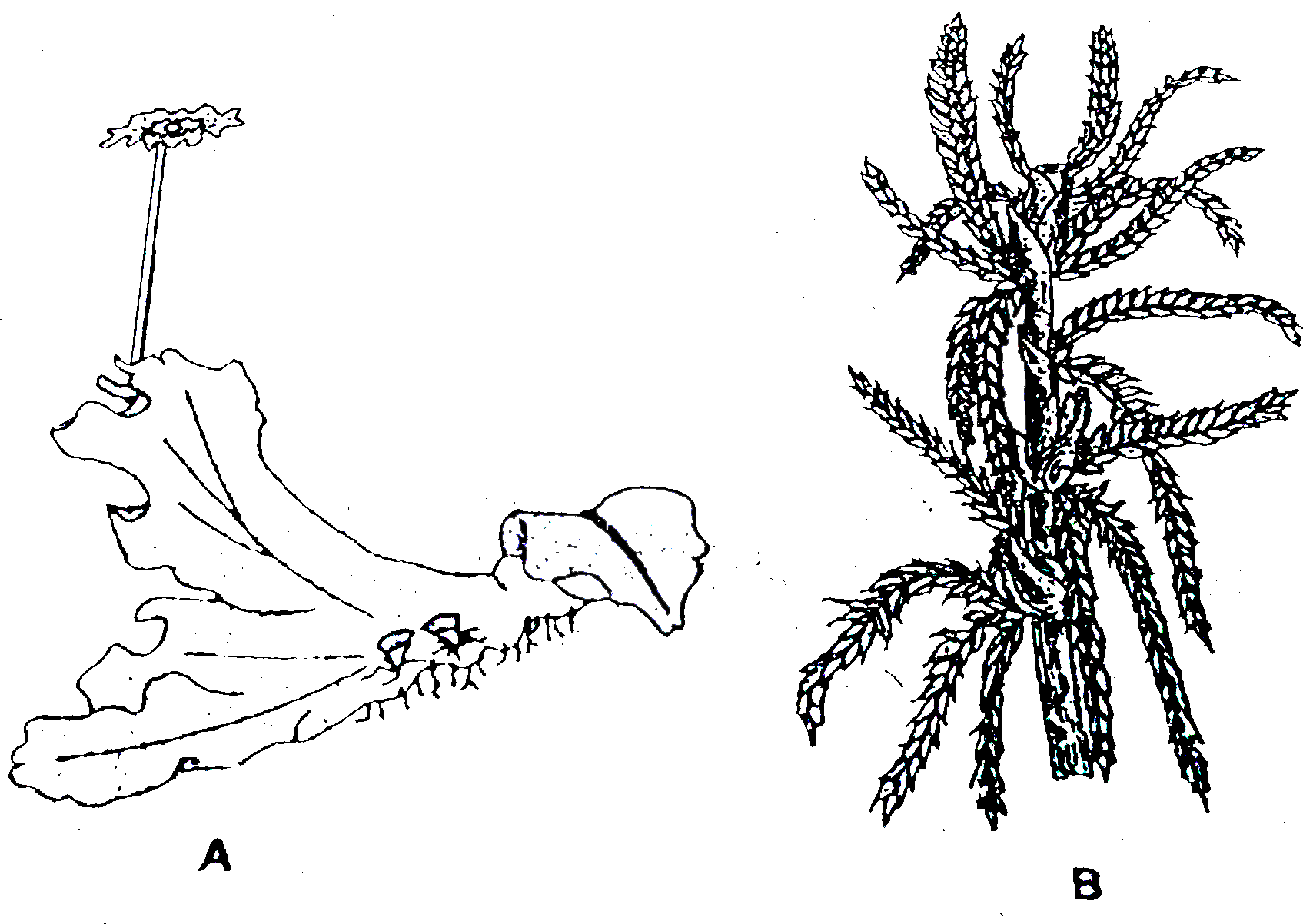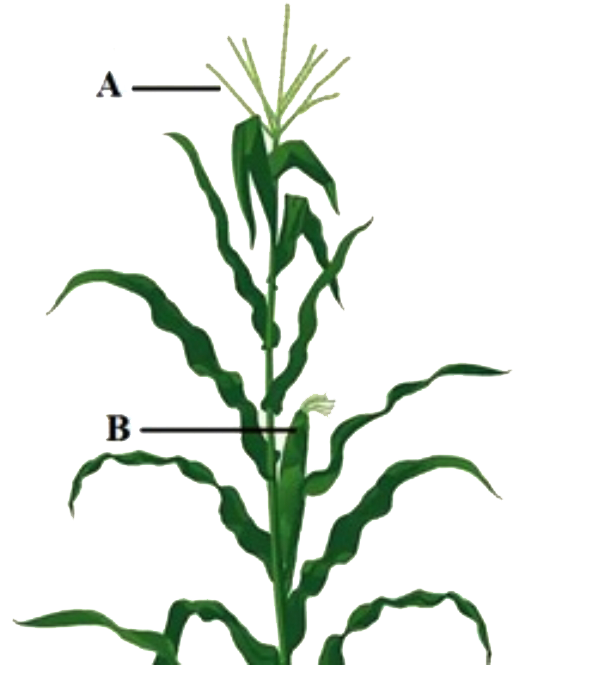Plant A and B are tendrillar climbers of Liliaceae. Plant A in its leaf exhibits a character of dicot and plant B has underground horizontal modified stem. Plant A and B respectively are
Smilax and Colchicum
Gloriosa and Smilax
Pisum and Lathyrus
Smilax and Gloriosa
The correct Answer is:D
To solve the question regarding Plant A and Plant B, which are tendrillar climbers of the Liliaceae family, we can follow these steps:
1. Identify the Characteristics of Plant A:
- Plant A exhibits a leaf structure that shows characteristics of a dicot. Dicotyledons (dicots) typically have broad leaves with a network of veins and a distinct petiole.
2. Identify the Characteristics of Plant B:
- Plant B has an underground horizontal modified stem. This type of modification is known as a rhizome, which is a stem that grows horizontally underground and can produce new shoots and roots.
3. Determine the Plants in Question:
- We need to identify which plants from the options provided fit the descriptions of Plant A and Plant B. The options given are:
- Smilax, Colchicum
- Smilax, Pisum, Lathrus
- Smilax and Glorisa
- Pisum and Lathrus
4. Match the Characteristics with the Options:
- Smilax: This is known to have tendrils and can exhibit dicot characteristics in its leaves.
- Pisum: This is a well-known dicot plant (pea plant) and has tendrils, fitting the description for Plant A.
- Lathrus: This is also a tendril climber and belongs to the Liliaceae family, fitting the description for Plant B with its rhizome.
- Colchicum and Glorisa do not fit the descriptions provided for Plant A and Plant B.
5. Conclusion:
- Based on the characteristics and the options, Plant A corresponds to Pisum (a dicot) and Plant B corresponds to Lathrus (which has a rhizome). Thus, the correct answer is Pisum and Lathrus.
Final Answer:
Plant A and B are respectively Pisum and Lathrus.
---
- Plant A exhibits a leaf structure that shows characteristics of a dicot. Dicotyledons (dicots) typically have broad leaves with a network of veins and a distinct petiole.
2. Identify the Characteristics of Plant B:
- Plant B has an underground horizontal modified stem. This type of modification is known as a rhizome, which is a stem that grows horizontally underground and can produce new shoots and roots.
- We need to identify which plants from the options provided fit the descriptions of Plant A and Plant B. The options given are:
- Smilax, Colchicum
- Smilax, Pisum, Lathrus
- Smilax and Glorisa
- Pisum and Lathrus
- Smilax: This is known to have tendrils and can exhibit dicot characteristics in its leaves.
- Pisum: This is a well-known dicot plant (pea plant) and has tendrils, fitting the description for Plant A.
- Lathrus: This is also a tendril climber and belongs to the Liliaceae family, fitting the description for Plant B with its rhizome.
- Colchicum and Glorisa do not fit the descriptions provided for Plant A and Plant B.
- Based on the characteristics and the options, Plant A corresponds to Pisum (a dicot) and Plant B corresponds to Lathrus (which has a rhizome). Thus, the correct answer is Pisum and Lathrus.
Plant A and B are respectively Pisum and Lathrus.
Topper's Solved these Questions
- MORPHOLOGY OF FLOWERING PLANTS BOOK - AAKASH SERIESCHAPTER - MORPHOLOGY OF FLOWERING PLANTS EXERCISE - EXERCISE - II
103 Videos
- MORPHOLOGY OF FLOWERING PLANTS BOOK - AAKASH SERIESCHAPTER - MORPHOLOGY OF FLOWERING PLANTS EXERCISE - EXERCISE - III (Previous AIPMT/NEET Questions)
41 Videos
- MORPHOLOGY OF FLOWERING PLANTS BOOK - AAKASH SERIESCHAPTER - MORPHOLOGY OF FLOWERING PLANTS EXERCISE - EXERCISE - I (Flower)
28 Videos
- MICROBES IN HUMAN WELFARE BOOK - AAKASH SERIESCHAPTER - MICROBES IN HUMAN WELFARE EXERCISE - EXERCISE-III (Previous AIPMT/NEET Questions)
25 Videos
- REPRODUCTION IN ORGANISMSBOOK - AAKASH SERIESCHAPTER - REPRODUCTION IN ORGANISMSEXERCISE - Exercise-III (previous AIPMT/NEET Questions)
19 Videos
Similar Questions
Ginger plant has an underground stem which is
View SolutionThe modified stem in some plants of arid region is
View SolutionWhat type of leaf does dicot plant have?
View SolutionIdentify the plants A and B in the figures given below

View SolutionA horizontal underground stem is a
Or
Ginger plant has an underground stem which is
View SolutionUnderground stem is rhizome in plant
View SolutionChromosome number in endosperm cell of plant a and in the root apical meristem cell of plant b together equal to chromosome number in shoot apical meristem cell of apple. Plants a and b respectively are
View SolutionIdentify the labelling A and B with respect to the maize plant .

View SolutionRoot, shoot or leaf, which area of plant has a quiescent centre.
View SolutionC3 cycle was first studies in a plant of A group in plant kingdom & C4 cycle was first studied in a plant of B group in plant kingdom A & B respectively are
View Solution